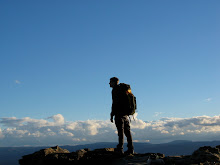THIS WEEK:
- We began section 3 on DNA and genetics
- Finished section 2 on reproduction; you should be an expert on reproduction in plants and animals! Okay, maybe not an expert...but close!
- You should already have handed in your final copy of "Our Ecosystem" assignment/lab
- Read page 38-54 in your textbook
- Complete definitions of key words (words in notes)
- Complete open book quiz (due Thursday -9e/9b or Friday 9h
- Study for quiz on section 2-3, which will be Monday or Tuesday depending on your class
OUR ECOSYSTEM:
- Last week we took our learning outside
- We reviewed genetic diversity and species diversity out in a real ecosystem
- our class identified common plant and animal species in the ecosystem
- We recognized examples of interdependence and symbiosis in our ecosystem
- Reproduction was learned about by looking at real organisms
Please view the below video for a history of DNA and a brief overview of this fascinating topic:
http://videos.howstuffworks.com/hsw/24990-genetics-understanding-dna-video.htm
Please view this video on cellular division:
http://videos.howstuffworks.com/hsw/17574-understanding-cells-how-cells-reproduce-video.htm
